In the lush fields of Kenya, a remarkable story unfolded, one that showcases the power of global collaboration and the relentless pursuit of sustainable solutions. This is the tale of how a chance encounter at a WAITRO Summit sparked a transformative journey, bringing together minds from opposite corners of the world to tackle a pressing issue: the management of agricultural waste.
The Catalyst: WAITRO Summit 2022
It all began in Barcelona, during the spring of 2022, where the WAITRO network brought together innovators and thought leaders from around the globe. It was there that Prof. Joshua Abuya from Kibabii University in Kenya crossed paths with James Devitt of the University of Huddersfield in the UK. Their initial conversation about the needs of rural African communities ignited a shared vision: to find sustainable solutions for agricultural waste. Little did they know, this encounter would spark a journey of innovation and change.
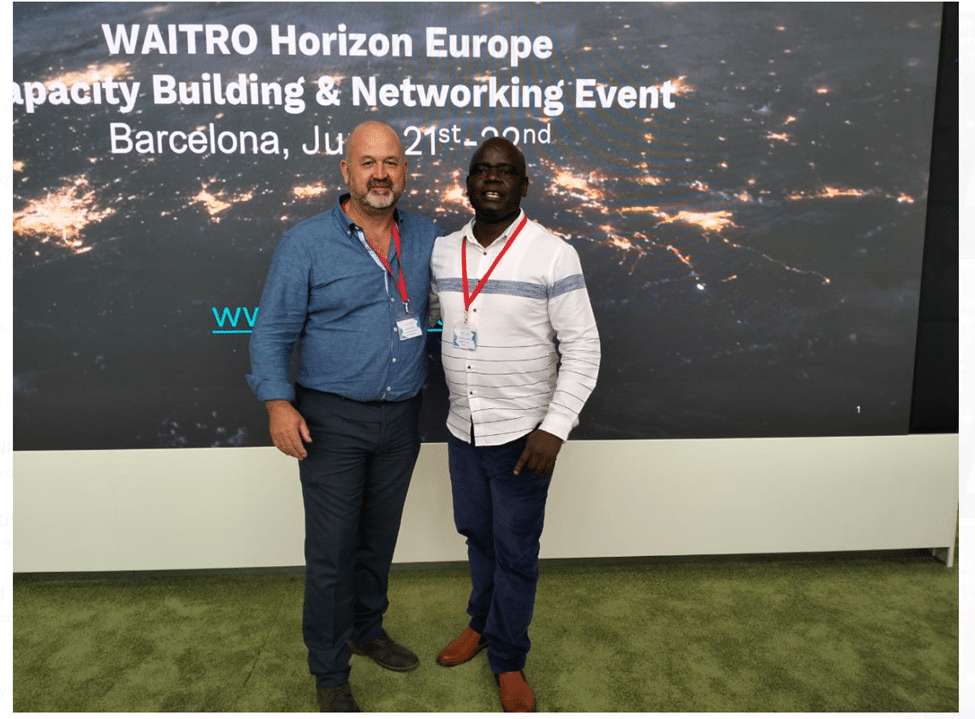
James Devitt of the University of Huddersfield (UK) and Prof. Joshua Abuya of Kibabii University in Barcelona, Spain.
Fuelled by the spirit of camaraderie, their partnership gained momentum at the WAITRO Summit 2022 in South Africa, where the seeds of collaboration truly took root. Joined by Prof. John Allport and others, the team exchanged ideas that would shape the course of their collaboration. A simple poster on sugarcane waste at the SDG Impact Session caught their attention, leading them to embark on an ambitious quest to transform this environmental challenge into an opportunity.
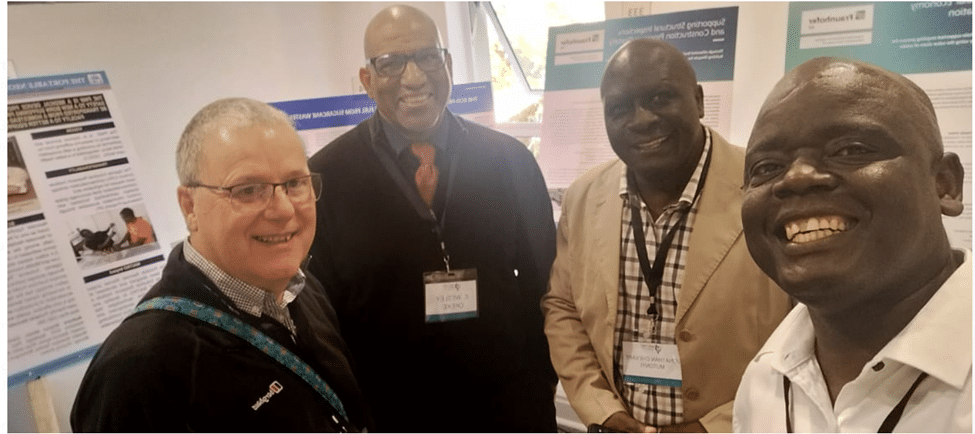
Prof. John Allport, Dr. Wesley Okeke, Dr. Jonathan Mutonyi and Prof. Joshua Abuya of Kibabii University in Cape Town, South Africa
The Challenge: Sugarcane Waste
Sugar cane is one of the most widely grown crops in the world. To satisfy demand for the myriad of products made using sugar, from cakes and sweets to fuel for vehicles, Kenya’s sugarcane industry inadvertently generates vast quantities of sugar cane waste, encompassing leaves, bagasse, and other plant matter. This waste, if left unmanaged, poses significant environmental risks, contributing to greenhouse gas emissions and polluting waterways.
The waste volume is immense, with 1 hectare* producing around 93 tonnes of cane, yielding 12 tonnes of raw sugar and over 80 tonnes of waste. While leaves are used as mulch for the next crop, a significant portion ends up as “bagasse” after sugar extraction.
*1 hectare equates to roughly 2.5 football fields
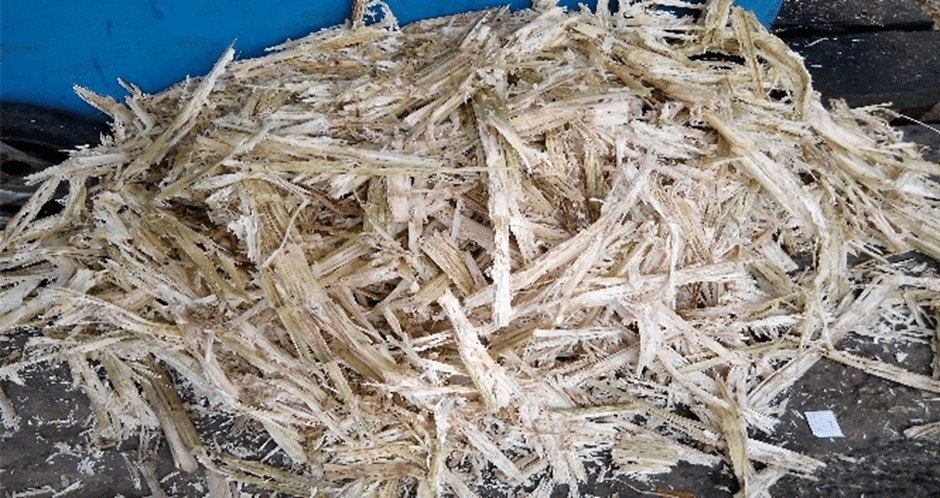
Sugar cane bagasse
Bagasse can be used for a variety of purposes such as paper making, poultry litter and animal feed, however the greatest use is as fuel for the sugar mills themselves. Once dried, the bagasse can be burned to fuel the boilers used in the sugar making process. In sugarcane producing areas, bagasse is used as boiler fuel in many industries, for example brewing.
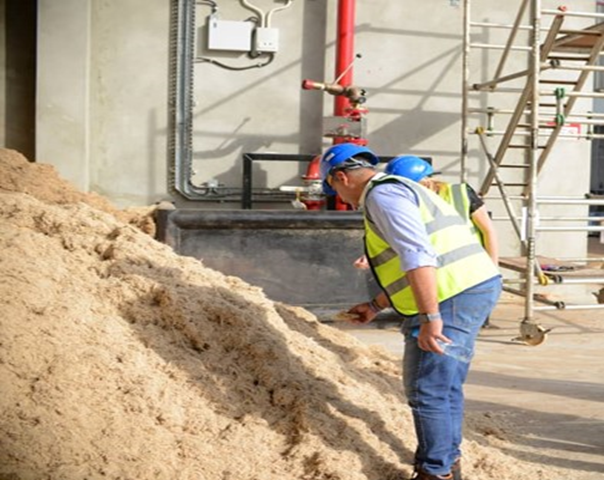
Bagasse being used as fuel in the sugar processing plant
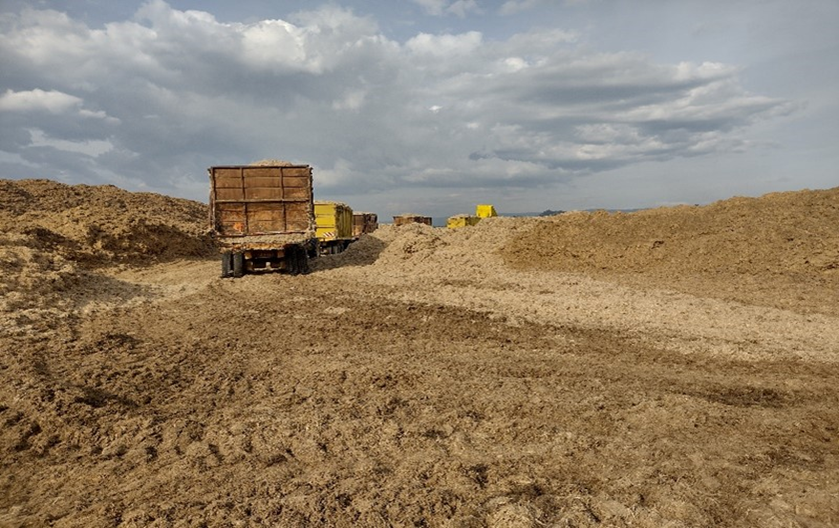
Sugar cane bagasse being dumped
In many areas however, the amount of bagasse produced exceeds by far the requirements of the sugar mill for fuel. In these cases, the bagasse is dumped and left to rot.
In the example in this picture, 50 truckloads of bagasse per day are added to this dump from a single sugar mill. In the town where this is located, there are 4 sugar mills, each producing a similar amount of waste. This is extremely detrimental to the environment, as the decaying waste gives off methane, each tonne of which is equivalent to 29.8 tonnes of CO2. The leachate carried off it by rainfall is highly acidic and pollutes the local waterways, which are the main source of drinking water in some of the more rural areas.
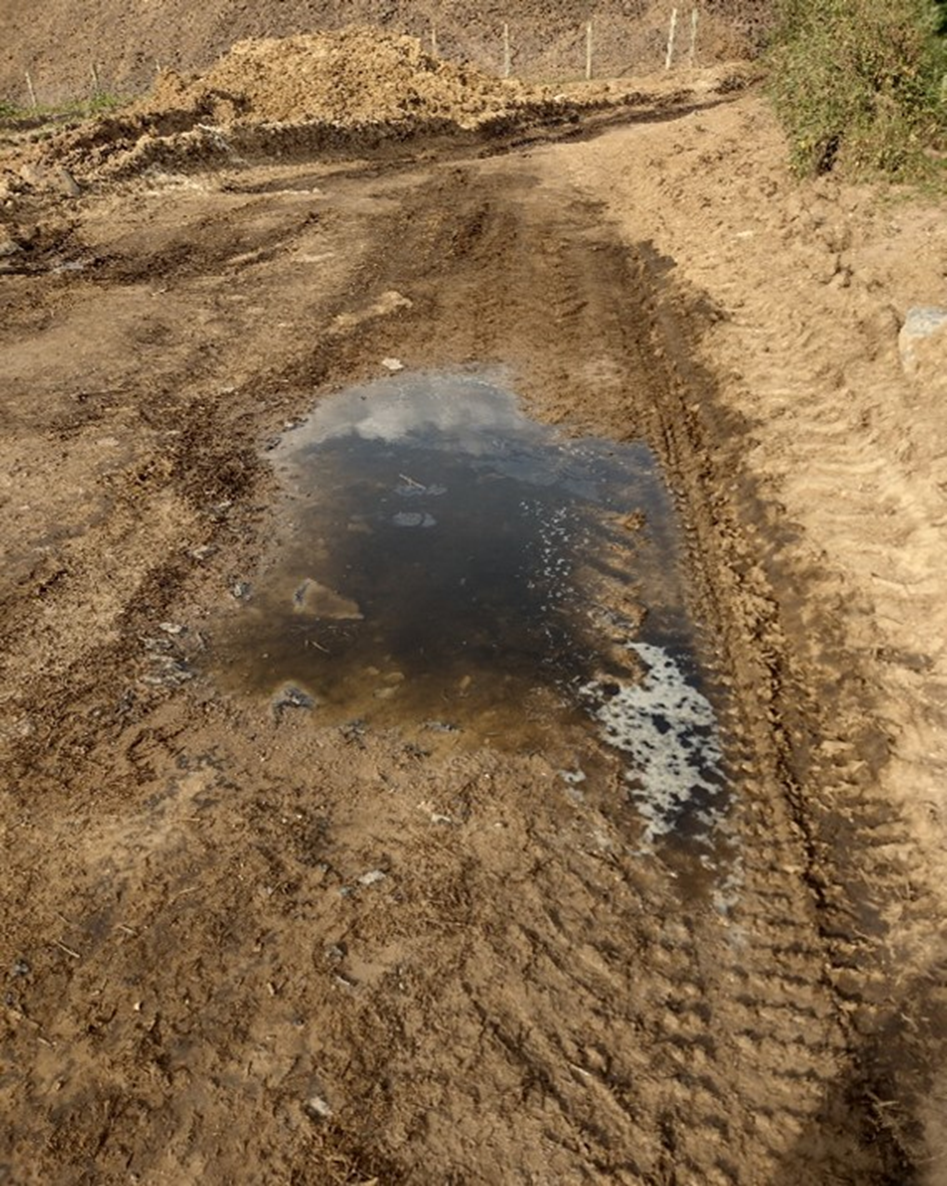
Water leaching from the bagasse after rainfall
As previously stated, there are other uses for bagasse, but there needs to be a demand for any product, as well as the initial investment to set up processing plants. One potential solution is converting bagasse into cooking fuel briquettes, replacing charcoal in traditional stoves that emit harmful carbon monoxide and particulate matter. Forster Andanje of Carbon Footprint Ltd developed a process to transform bagasse into solid briquettes without added binders or chemicals, ideal for cleaner, longer-burning cooking fuel. However, the process requires drying the initially wet bagasse, which is challenging in Kenya’s tropical climate with frequent rainfall.
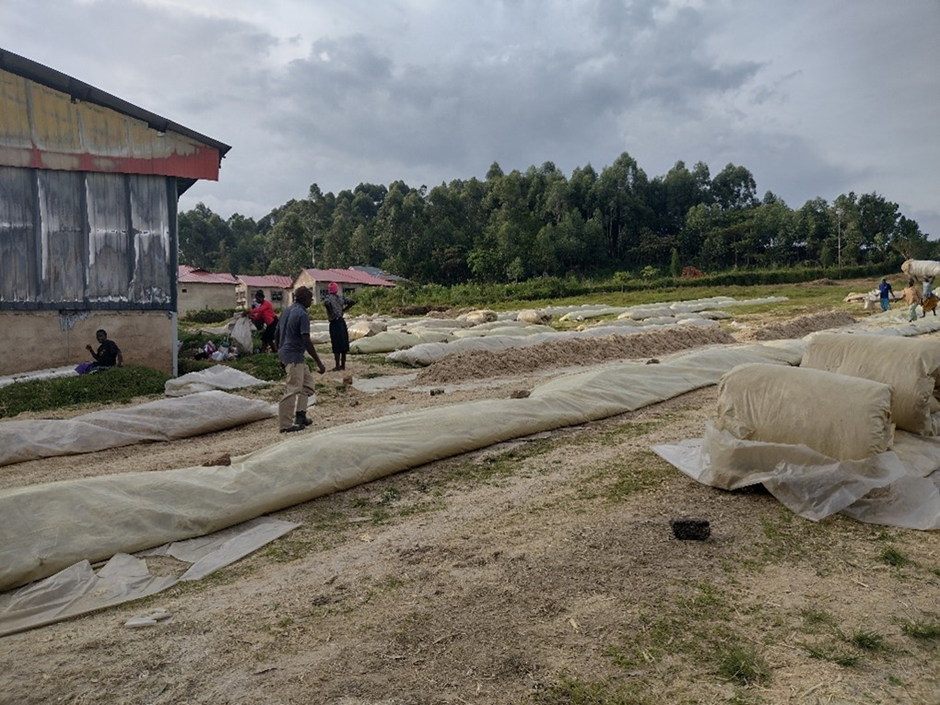
Manual drying of the bagasse in the sun
The newly acquainted team saw the potential to turn this problem into a solution. The challenge was to take this environmental hazard and transform it into something useful that benefits the local Kenyan community, namely cooking fuel. This led to a significant 2-year adventure linking the Global North and South in a venture to solve a problem which, although local in nature, is a step towards addressing an issue that affects us all, namely global warming.
The Solution: Clean Cooking Fuel
With the support of Innovate UK, the project gained momentum, securing funding to kickstart the team’s endeavours. Together with Carbon Footprint Ltd., they set out to revolutionize sugarcane waste management by optimizing bagasse conversion into clean cooking fuel, aiming to improve health outcomes and reduce reliance on harmful practices like illegal logging for charcoal production.
Following a visit by Prof. John Allport to Kibabii University, the partners found a suitable funding opportunity through a pilot program modelled after the UK’s successful Knowledge Transfer Partnerships (KTPs). This program aimed to establish KTP-like initiatives in Kenya, Nigeria, Ghana, and South Africa, with Innovate UK funding initial collaborations between African universities, companies, and experienced UK university mentors.
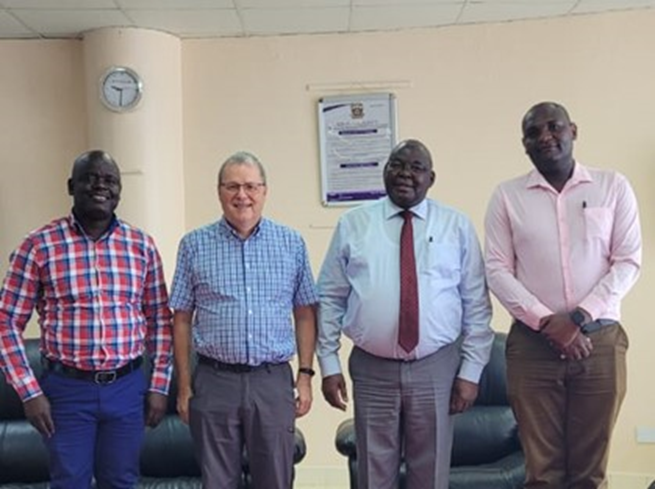
Meeting between Prof John Allport and Prof. Isaac Ipara Odeoo (the Vice Chancellor of Kibabii University)
The team’s application, involving the two universities and Carbon Footprint Limited, secured £250,000 from Innovate UK in September 2023. The resulting project embraced sustainability, environmental aspects, waste management, and improving people’s health, catalysing further collaboration potential between the partners and an official Memorandum of Understanding between the two universities in 2023.
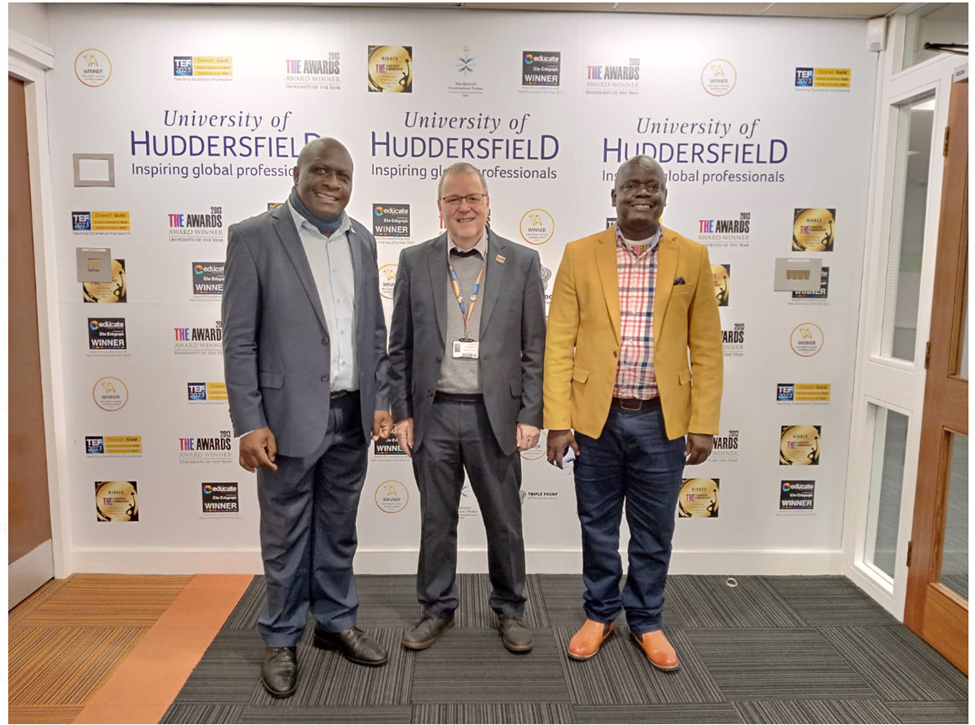
Prof. John Allport, Dr. Jonathan Mutonyi and Prof. Joshua Abuya
Prof. John Allport, a key driving force behind the project, emphasized the significance of this collaboration: “It has been a real experience developing the relationship with the team in Kenya, with all partners learning a lot about each other and gaining invaluable experience from each other. None of this would have come about without the initial meeting between James and Joshua at WAITRO in Barcelona bringing us all together in South Africa. It only takes a small thing to start something big if the will is there, and with this project, there is more than just a will, there is a passion from all involved to make it work.”
SDG IMPACT
The project’s impact extends far beyond waste management. By providing a clean and sustainable alternative to traditional charcoal, the briquettes have the potential to improve air quality and reduce respiratory health issues in rural households. Furthermore, the project creates economic opportunities for local communities, fostering self-sufficiency and empowerment.
Prof. Abuya said that “In the halls of Kibabii University, the excitement is palpable. The Vice Chancellor, Prof. Isaac Ipara Odeo, my colleagues, and myself are eager to see our vision come to life, knowing that our efforts will have a ripple effect far beyond our borders. With every step forward, we are reminded of the power of collaboration and the potential for change. And as we work tirelessly to bring this project to fruition, we know that we are not alone. Together, we will pave the way for a brighter, more sustainable future for all.”
For Prof. Abuya Joshua and his team, this project represents more than technological innovation – “it’s a beacon of hope, showcasing what can be achieved through collaboration and shared vision”. As they look ahead, they see a world where waste is no longer a burden but a source of opportunity. With each briquette produced, they inch closer to a future where sustainability reigns supreme.
This remarkable collaboration serves as a testament to the power of global partnership and the transformative potential of innovative thinking. By harnessing the strength of the WAITRO network and embracing systems thinking, this project has turned an environmental challenge into a catalyst for sustainable change. As the teams continue to work tirelessly, they pave the way for a brighter, more sustainable future, not only for Kenyan communities but for the world at large.
For more information on the project contact :
James Devitt ( University of Huddersfield ) : J.Devitt@hud.ac.uk
Details
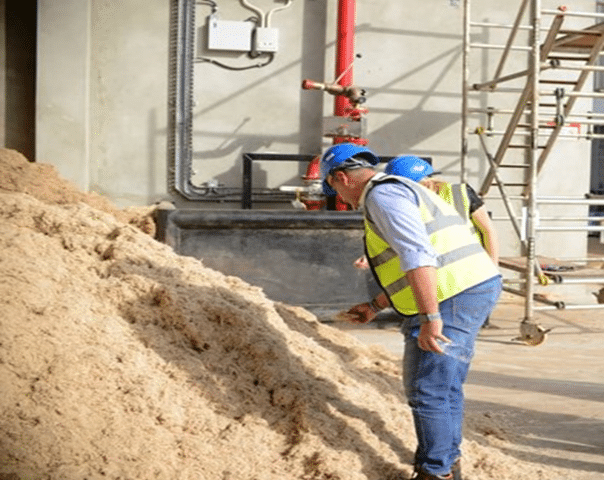
Date: WAITRO Summit 2022
Location: KIBU, Kenya
Project Partners: KIBU (Kenya), Huddersfield University(UK)
- Collaborative Project
- WAITRO Facilitated Project
